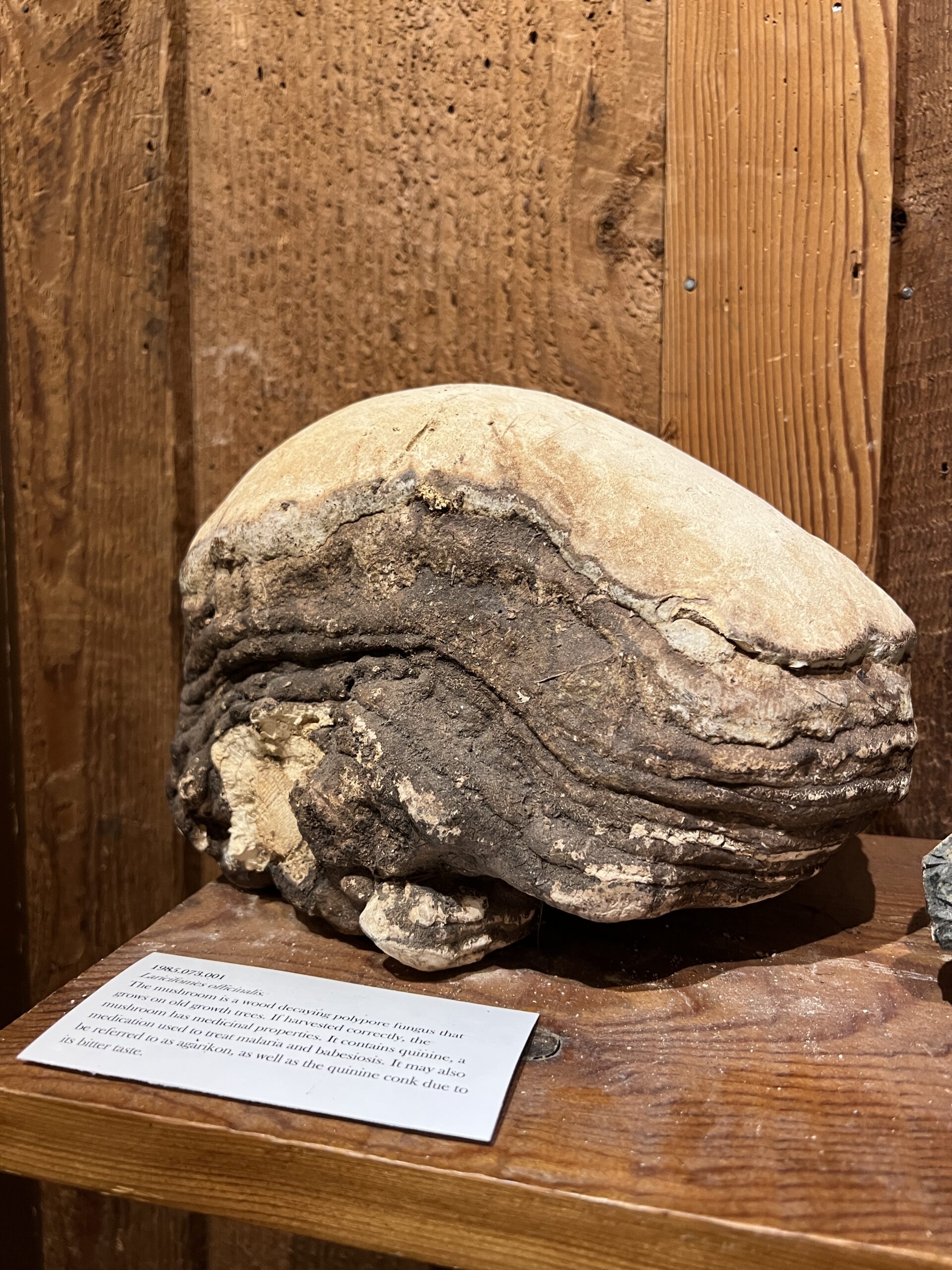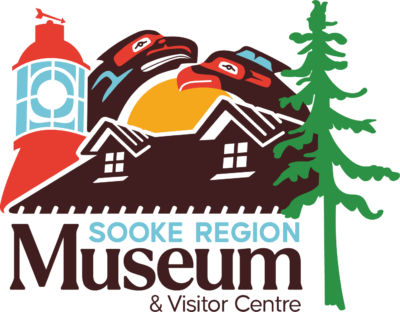
Upon entering the museum, you may be familiar with our cougar up in the tree. If you are to look below on one of the lower shelves, you will see a rather unique item. First, it was mistakenly labelled as a rock, but a team of fungus and mushroom specialists correctly identified it as a Tree Fungus. The body of this fungus is approximately 11 or 12 years old which is evident by the layers on the specimen, but it could be much older. If you were to cut into it, you can get the exact age. The fungus was donated in 1985 and since then it has been on display in our Natural History display.
Whether you know it by its scientific name Laricifomes officinalis, common name “Agarikon”, or not at all, this conk has some interesting information behind it. The Agarikon is a conk which is a type of fungus in the group Polypores. Often, conks feed on the heartwood and sapwood of host trees which can render the wood unfit for commercial purposes. This fungus can grow on living or dead trees and are perennial meaning each season they add a new fertile layer to the bottom of the conk.
Now, looking more closely at the Agarikon, it tends to grow on conifers (trees that produce cones), dead or living and on stumps. Agarikons are not edible and are somewhat poisonous. Usually, they are found in Southern BC and Haida Gwaii. These fungi have a long history of use as a religious and medicinal mushroom in Asia, Europe, and North America. In British Columbia and the US Pacific Northwest, some Indigenous groups call it the “ghost bread”. The conks were carved and used in shamanistic rites. If the conk is harvested properly, the medicinal properties have been traditionally used to treat asthma, cough, stomach and lung ailments.
Fungus and mushrooms play an important role in Sooke’s identity. Many people in the Sooke Region may be familiar with foraging for mushrooms, textile dyeing or their medicinal properties. As well, there are many local foragers selling their mushrooms at our night market all summer!
If you are wanting to know more or want to get a closer look at some other fungi and mushroom varieties, the museum is hosting the Marvellous Mushrooms exhibit from the Royal BC Museum. It is in our upstairs gallery and will be open until April 22! As well, the museum will be hosting the workshop “Foraging and Dyeing with Plants and Mushrooms: Blending Traditional Coast Salish Knowledge with Science” on February 18. If interested, please go to our website for more information or contact our Programs Manager Elizabeth Shaw at the museum.


